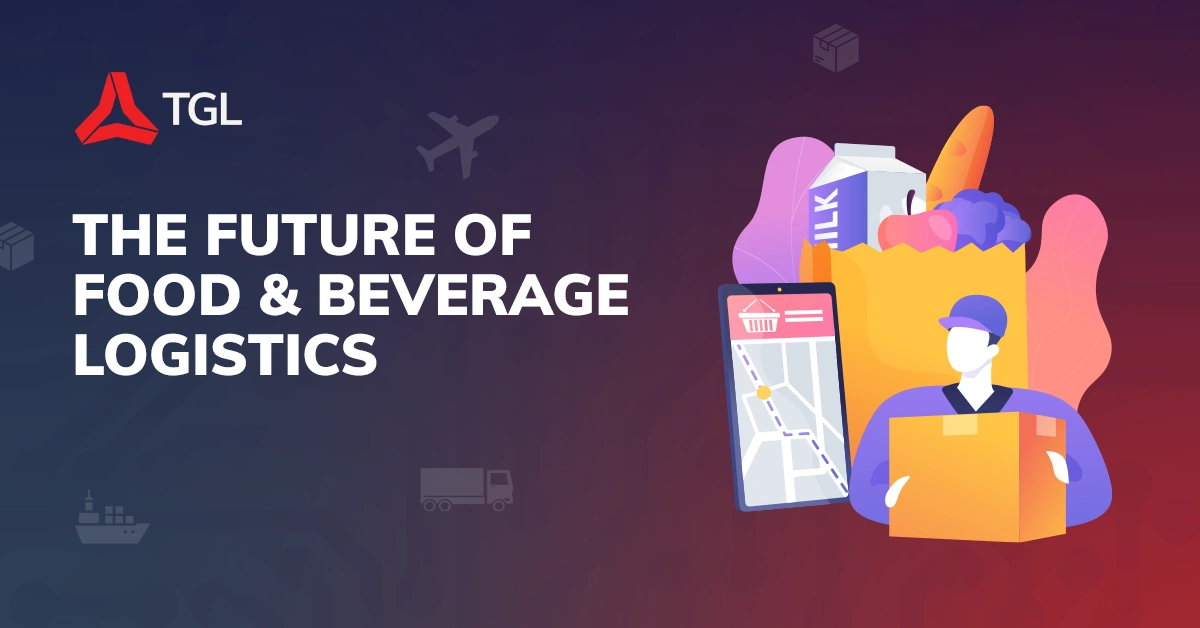The Impact E-Commerce has on Freight Forwarding

What changes is E-commerce having on the freight industry?
With the introduction and rise of e-commerce and the digital marketplace many companies went from only selling within their brick-and-mortar stores to including their own online store. Other companies saw a rise with only using online stores and online retailers such as Amazon and Alibaba. With e-commerce drastically changing how logistics and supply chain need to work together to match consumers expectations of: fast shipping, free shipping, and competitive pricing. These demands have challenged traditional logistics and supply chain models and forced companies to adjust their own strategies to be able to produce these demands for their clients.
It is estimated that e-commerce sales are to reach 17.5% percent of all retail sales worldwide by 2021. This exponential growth will cause the freight industry to prepare for future influx of demand and delivery expectations.
For online businesses the delivery of goods requires complex planning. Costly and complicated processes like ‘last-mile delivery’ and ‘reverse logistics’ mean that online retailers may alter their processes constantly to adapt to consumer needs and to stay competitive in their industry. These factors that impact the e-commerce company has created more highly specialised functions in the transportation sector that has resulted in these e-commerce companies needing to partner with established and experienced logistics companies to help with various secure service needs.
The warehouse market hasn’t just gotten smaller due to more companies expanding their distribution centres and battling for more space; but each of those e-commerce companies need more space to run more efficient. As numerous e-commerce operations scale up and retailers starting to take this approach, competition for warehouses especially near major cities will drastically increase along with their prices. In the race to meet customer expectations for faster delivery, creating a broad network of fulfilment centres may be the most effective and sustainable strategy for retailer than paying for fast tracked shipping.
New standards and goals for E-commerce and Freight Forwarding
- Improved customer and supply chain communication
- Transparency in the supply chain
- Ability to handle more inventory
- Advanced tracking and order management
- Customer satisfaction as a top priority
- Cost reduction
- Lowered fuel usage
- On-time delivery
- Fast delivery at prices that consumers are willing to pay
- Frictionless returns policy
Managing consumer expectations
With consumers being accustomed to delivery times shortening, due to retailers offering fast tracked delivery as well as free options of shipping; the logistics industry need to adapt to the increasing delivery pressures that these consumers expectations cause.
With E-commerce businesses and online retailers opting for just-in-time (JIT) delivery instead of traditional long-haul delivery as well as suppliers opting for single warehouses opting out of multiple storage facilities to meet local needs. This shift in demand in other areas of freight forwarding will fundamentally change how freight forwarding is done as in what ways shipping and delivering will be done.
As E-commerce continue to rise, it is likely that freight forwarders will need to continue to adjust their business models to accommodate present and any future demands of their clients and consumers.
How freight forwarders can stay competitive
It will be difficult for freight forwarders to stay competitive if they refuse to make digital plans in this digital era. Forwarders will have to force themselves into the e-commerce industry to gain the opportunities to wasn’t initially for them as their is high demand for cross-border e-commerce logistics. The integration of this industry is still ongoing, and as a brilliant freight forwarder, you should have a progressive mindset to plan your dreams bigger before you are out competed.
The Future of Freight forwarding for E-commerce
With the e-commerce supply chain continuously growing and changing new logistical tactics are critical. But the best practices and solutions have emerged.
Adopt Automation:
Major online retailers such as Amazon and Alibaba are turning to automation to deliver a seamless supply chain. Old-school methods of phoning and faxing for booking shipments need to be replaced entirely by modern procedures. Freight forwarding firstly needs automated booking and pricing and develop sophisticated tracking and notification to match.
Warehousing, sorting hubs, last-mile transporters and the final consumer can plug into shipment data and book services with ease.
Optimising Routes and Pricing:
This role has been within freight forwarding for as long as forwarding has been around. Still forwarders are finding the lowest prices through negotiating with carriers. While this will still be around for years to come technology can help greatly in finding the best deals for routes. With advanced transportation management software, freight forwarders can now pick the best pricing through the use of data. Freight forwarders can instantly compare performance statistics and pricing by the volume of hauls to find the most cost-effective option. Technology like this could also determine the fastest route for shippers, further improving the e-commerce supply chain.
Improve Reverse Logistics:
Returning items are a hassle for all parties involved. Within e-retail customers expect a hassle-free return method to get their money back. Now shippers are responsible for managing the shipment back to them, so they are able to resell or refurbish the items. This can become a large cost for e-retailers. With reverse logistics e-retailers and freight forwarders can now track performance metric and customer demands to optimise transportation costs.
Expand the IoT (Internet of Things):
Freight forwarders can be the key part in helping the transportation industry increase their technology infrastructure and accountability. There has been demand for the past years on more advanced tracking and optimised fuel costs that on the forwarders can encourage carriers to adopt electronic data loggers for vehicles to reduce idling, select the best routes, provide traffic data and track their performance.
Streamline warehousing management:
Since e-commerce require large amounts of inventory, their warehousing strategy needs to mature with it. E-commerce companies need to know how to prepare their inventory with the use of SKU numbers to storing items efficiently. Retail stores have developed a sorting method that when new inventory is available, they place it on any available space and log its location into an inventory tracking system which then can be used to design optimal routes to throughout the warehouse to pick orders.
Speed up cross-border shipping:
With customers’ expectations on shipping cross-borders rising, fast shipping has become a necessity. With cross-border shipping customs can drag on the process of delivery the products. Customs brokerage can speed up this process, ensuring that no delays will happen to cargo and avoid any additional fees.
References:
www.purolatorinternational.com/how-ecommerce-is-changing-the-freight-forwarding-industry/
www.gofreight.co/blog/blog-e-commerce-logistics-changing-freight-forwarding-industry.html
www.conquerornetwork.com/blog/2020/09/10/impact-of-e-commerce-on-the-freight-forwarding-industry/
https://blog.capps.com/3-ways-e-commerce-is-changing-the-logistics-industry
www.inboundlogistics.com/cms/article/the-impact-of-e-commerce-growth-on-logistics-companies/


